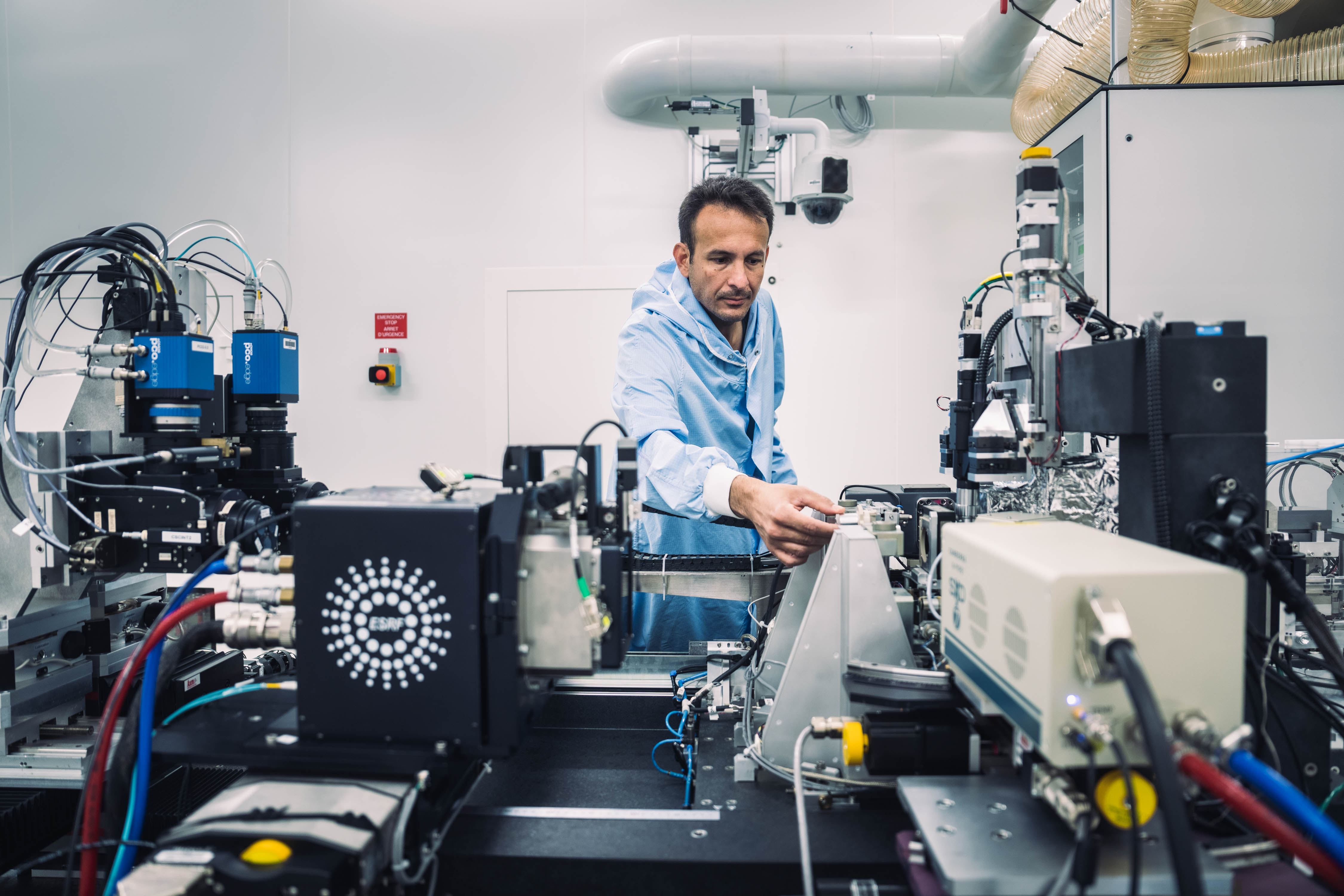- Home
- News
- General News
- Scientists design...
Scientists design new nanowires to power the Internet of Things
03-02-2023
Researchers from the Catalonia Institute for Energy Research (IREC), the Institute of Microelectronics of Barcelona and the ESRF have characterized a new thermoelectric device based on SiGe nanowires, with promising results for application in the Internet of Things. Their results are published in Small.
The Internet of Things (IoT) refers to devices, such as vehicles, home appliances or wearable technology, which contain electronics, software and sensors to connect and exchange data. To date, these devices are powered mainly by primarily (single-use) batteries, which are discarded when they reach their end of life and consequently generate electronic waste.
With the goal of becoming more sustainable, scientists are now focusing on thermoelectric devices to generate power when using the IoT. These devices convert temperature differences into electrical energy and, potentially, could be used indefinitely without needing to change them. This would eliminate the need for frequent battery replacements, reducing maintenance costs and improving device reliability.
However, today these devices come with some disadvantages: they have limited efficiency, the existing ones are expensive, based on toxic scarce elements and difficult to fabricate in large scale, especially at the small-scale application such as miniaturized electronics.
Now a team from the Catalonia Institute for Energy Research (IREC), in collaboration with the Institute of Microelectronics of Barcelona-National Center of Microelectronics, CSIC (Spain) and the ESRF, has investigated whether SiGe nanowires that, implemented in miniaturized devices, can successfully generate power. “The produced silicon germanium nanowires are good candidates because they are compatible with microelectronic processing and therefore easily amenable to large-scale production”, explains Àlex Morata, researcher at IREC and corresponding author of the publication.
The team grew the nanowires on a silicon substrate. The reason why they used a microplatform is that this would be the environment required if they were to be used for the IoT. To start the process, they placed small gold particles on the substrate. These particles, coupled with chemical vapour deposition, helped the growth of the nanowires. The nanowires grew up in a specific way that made them stand up straight on the substrate, which makes it easier to use them in devices. This method of growth also leads to good electrical and thermal connections between the nanowires and the substrate.
 |
|
Jaime Segura, scientist at the ESRF at the time of the experiment, on beamline ID16B. Credits: S. Candé. |
Once the nanowires had grown, they took them to the ESRF’s ID16B beamline where they used the nanobeam to characterise single wires and to study the distribution and concentration of gold inside the nanowires. “For us, the work at the ESRF was crucial to understand the mechanism leading to the undesirable incorporation of gold and its influence in the electrical and thermal properties of the nanowires”, says Morata. The team also successfully proved that three micro-generators connected in series led to a rise in the voltage.
”The high flux provided by the Extremely Brilliant Source at the ESRF, combined with the high sensitivity of the XRF detection setup of ID16B, enabled the detection of trance concentrations of gold inside the nanowires. The quality of the data acquired allowed us to analyze the distribution and calculate the concentration of gold inside the wire, which helps to unveil the process behind its incorporation into the nanowires” explains Jaime Segura, former scientist at the ESRF and co-author of the paper.
This is not the first time that the team comes to the ESRF. Previously they had studied devices for energy conversion, and they are already planning new experiments. “We are aiming to bring new materials and to understand the best processing conditions leading to high performance devices”, Morata concludes.
Reference:
Sojo-Gordillo, JM, Small, 31 January 2022. https://doi.org/10.1002/smll.202206399
Text by Montserrat Capellas Espuny
Top image: The image shows a nanowire characterized by nano-XRF whose Ge-K and Au-L XRF lines intensities are shown in the middle and bottom figures, respectively. XFR analysis was performed over a nanowires growth with high B2H6 partial pressures. No gold nanoparticle was found at the tip. Credits: Small, First published: 31 January 2023, DOI: (10.1002/smll.202206399)



